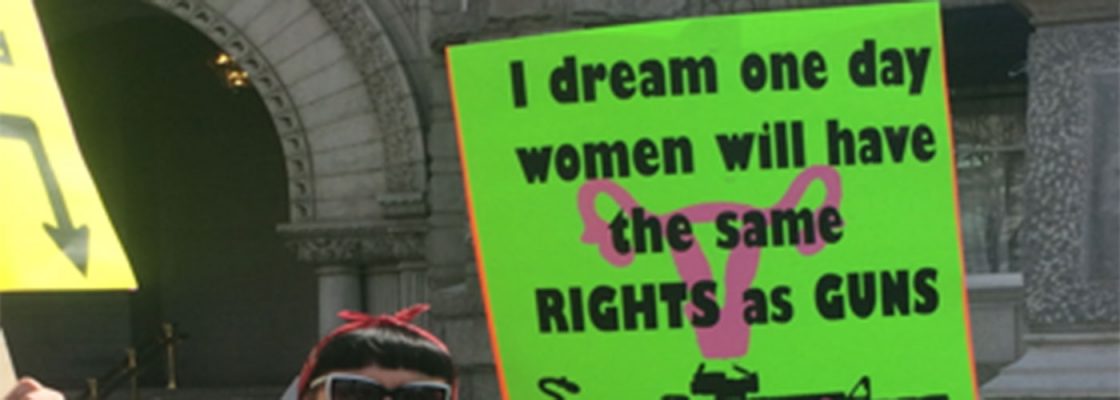For the second time in 13 months I found myself joining hundreds of thousands of activists drawn to the streets of Washington, DC, this time to support an astounding movement begun by high school students from Parkland, Florida, aimed at removing the scourge of gun violence from our schools, churches, shopping malls, movie theaters, and society at large.
It’s hard to look back at Sandy Hook, Virginia Tech, Aurora, Orlando, Las Vegas, and countless other mass shootings and wonder why this one was the tipping point that brought people into the streets — not only in DC, but in over 800 cities across this nation and many other nations. In the end, I’m not sure it matters much because there is absolutely no question that this time it’s different and enough is enough.
The feeling for me attending the March for Our Lives was distinctly different than what I felt attending the Women’s March. While I wanted to be front and center in January 2017 — my rage and hope and defiance placing me and my companions in a position where we were literally unable to move for five hours packed in one block from the stage — this time I felt my role as distinctly supportive, a bit on the sidelines, often stepping back to let students and their families snake their way forward. As a survivor of the shooting in Tucson that injured Rep. Gabby Giffords said, “These students have done what we have not been able to do before now, and we are here to support them, catch them when they fall, offer advice and encouragement…but we should stand back and let them lead.” Standing back, but still standing up, seems to describe the space I occupied that day.
There were no celebrities speaking at this rally. We heard only the defiant and anguished and sometimes nervous (who wouldn’t be – speaking before 800,000 people!) voices of the Parkland survivors. Wisely acknowledging their positions of privilege and relative affluence, the Parkland students shared the stage and invited the powerful voices of students who face gun violence in their neighborhoods every day and who have stared down the barrel of a gun in South Central Los Angeles, Chicago, Baltimore, and elsewhere. These young people who have lost brothers, sisters, and best friends. They gave the most powerful testimony and urged us to say the names of those they have lost, to sing happy birthday to someone no longer on this earth to celebrate, and to keep their memory alive through this movement. An extraordinary 11-year-old named Naomi Adler spoke to give voice to young African-American girls and women who experience violence yet “seldom make it to the headlines.” It was in these moments that I felt most honored to be there.
These stories also brought into focus how the issue of gun violence is really a public health issue. As we now understand the social determinants of health and the effect of trauma on wellbeing, it isn’t just psychological disorders we’re grappling with because of the proliferation of these weapons. Multiple body systems have been shown to be impacted by the experience of sustained trauma including cardiovascular, immune, gastrointestinal, reproductive, and musculoskeletal and pain systems. Gun violence more often affects those pushed to the margins of society — the vulnerable people served by our community health centers and public hospital systems. Isn’t it time we move beyond the highly-charged Second Amendment debate and focus on this epidemic that is tearing apart families and communities? What if we made it a lot harder to get an assault weapon and just a little easier to get health care, including and in particular mental health care?
Will this march and this movement have a lasting effect? It sure feels like it will. While there was not an attack on one particular party or politician (except perhaps for Republican Sen. Marco Rubio of Florida), the crowd roared “Vote them out!” at every opportunity. The NRA was definitely on notice, with one organization calling out their $24,772,739 in campaign contributions to current senators and representatives displayed in shocking detail. (Speaker Paul Ryan notably took in $345,489.) With the GOP pocketing over 97 percent of these contributions and with the midterm elections around the corner, I truly believe this movement could tip enough races to swing the House in favor of legislators unafraid to tackle the issue of gun violence and gun safety. Even if there may not be enough newly eligible voters to swing an election, the issues of gun safety, assault weapons ban, high capacity magazines, and comprehensive background checks are absolutely on the table, along with funding for vastly improved mental health services. Dodgy and malleable positions on these issues are not likely to be tolerated.
Finally, of course, the signs are the best part of any march and this one did not disappoint.






